This Week in History recalls memorable and decisive events and personalities of the past.
8th August 1918 – Battle of Amiens
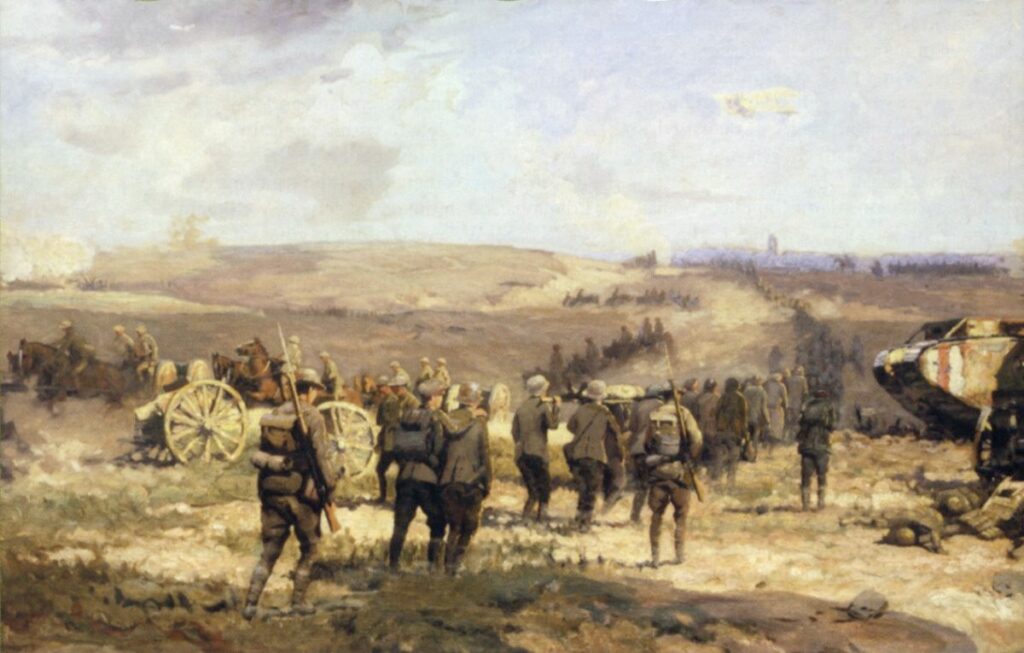
8th August, 1918 by Australian official war artist Will Longstaff, depicting a column of German prisoners of war being led toward Amiens, in the distance
Fouryears of grinding attritional warfare on the Western Front of the First World War had claimed millions of lives. The power of machine guns, the protectiveness of trenches from artillery, and difficulty of communication had made a breakthrough by either side very difficult.
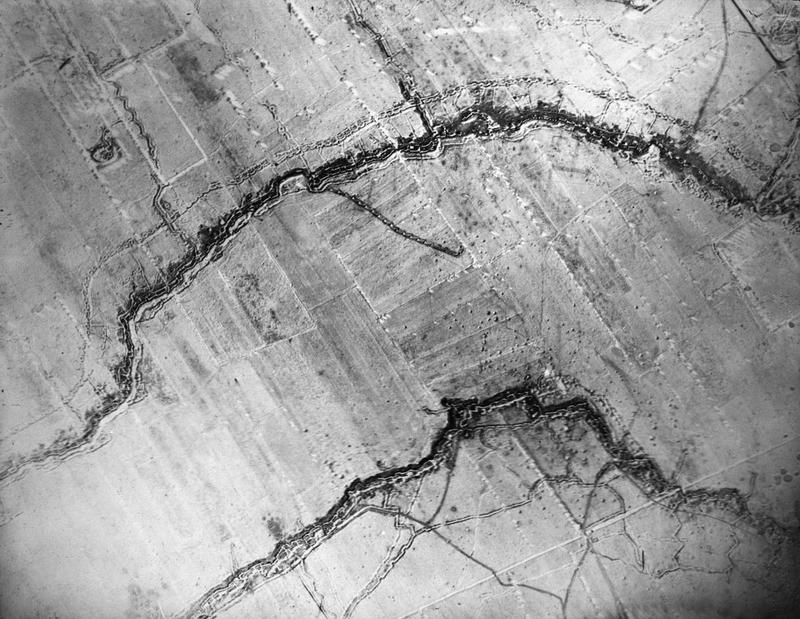
British (upper) and German (lower) frontline trenches, 1916 [No. 10 Squadron, Imperial War Museums, https://commons.wikimedia.org/w/index.php?curid=39781165]
For years, both sides tried many ways to break through the stalemate of trench warfare. The British invented tanks, the Germans pioneered stormtrooper tactics, gas and chemical warfare was used by both sides − but no one had managed to develop one of the most important aspects of modern warfare, combined arms operations.
Combined arms operations are where infantry, tanks, aircraft and artillery work seamlessly together to support one another during a battle. It requires a high level of organisation and communication, which even modern armies can struggle with.
Throughout the years of war on the Western Front, what would come to be modern combined arms warfare was slowly developed by the experience of battle, through trial and error.
Video clip of Allied bombing runs over German lines
The German Spring offensive from March to July 1918, had gained some significant ground against the French and British forces. It had failed, though, despite the use of small groups of stormtroopers (elite groups whose job was to infiltrate and bypass enemy front line units, leaving them to be mopped up by the regular troops). The Germans had also used the creeping barrage scheme, where artillery would shell the positions just ahead of the advancing German infantry. This was risky as miscommunication could see the artillery shell its own troops, but it worked when it denied the enemy the chance to recover from an artillery barrage.
The Allies had managed to resist the attacks, and German troops who believed their enemies were starving and low on ammunition were shocked to find in captured trenches that the British and French were much better fed and supplied than they were.
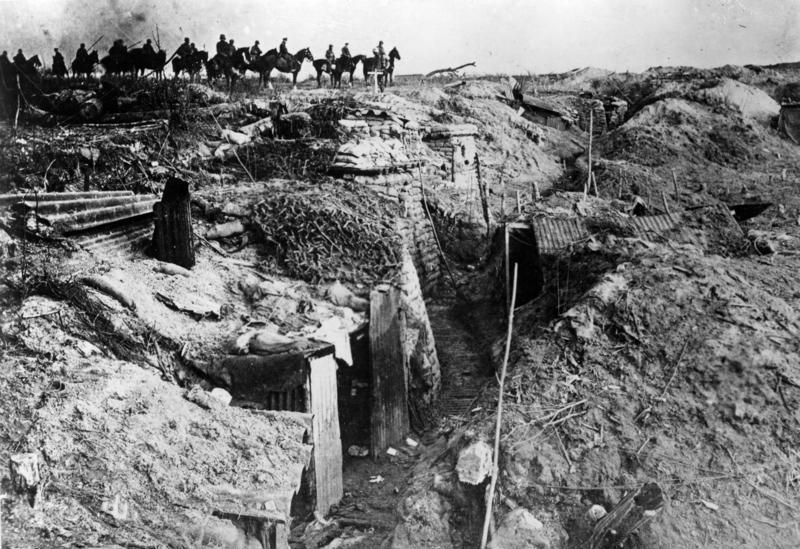
Mounted German troops passing a captured British trench [Bundesarchiv, https://commons.wikimedia.org/w/index.php?curid=5368369]
By July 1918, the German armies − which had looked so strong at the beginning of the year, knocking Russia out of the war in 1917, and having had many victories on fronts across Europe − were now exhausted and out of energy.
In August, the Allies struck back.
Using combined arms warfare, especially tanks (which, after two years of use, the British were now beginning to understand properly), the Allies began their counterattack with the Battle of Amiens. Managing to surprise the Germans, after years of fighting the British and French finally made a deep penetration of the German lines.
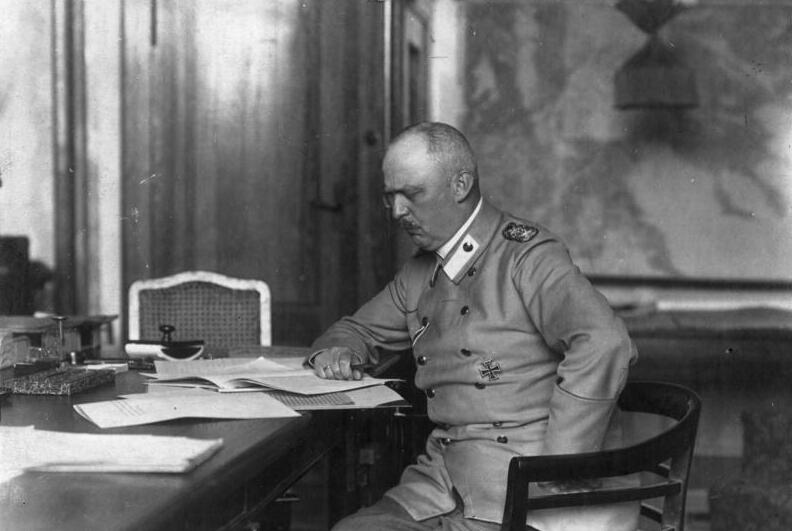
Ludendorff in his study at the General Headquarters, 1918 [Bundesarchiv, https://commons.wikimedia.org/w/index.php?curid=5348246]
Erich Ludendorff, Germany’s First Quartermaster General and, along with Paul von Hindenburg, de-facto ruler of Germany, would call the Battle of Amiens the “black day of the German Army”.
This battle began the so-called Hundred Days Offensive, during which the British and French began to rapidly advance against the Germans.

Canadian troops shelter in a ditch along the Arras-Cambrai road
The forces of Britain and France were now also joined by millions of fresh American troops, who until this point had played a minor role in the war but now joined the advancing Allies en masse.

On 1 September 1918, the Australian 54th Battalion establishes a machine gun position during its attack on German forces in Péronne, Somme
Despite fierce resistance, the German army could not hold against the combination of the new Allied tactics and the fresh American troops.
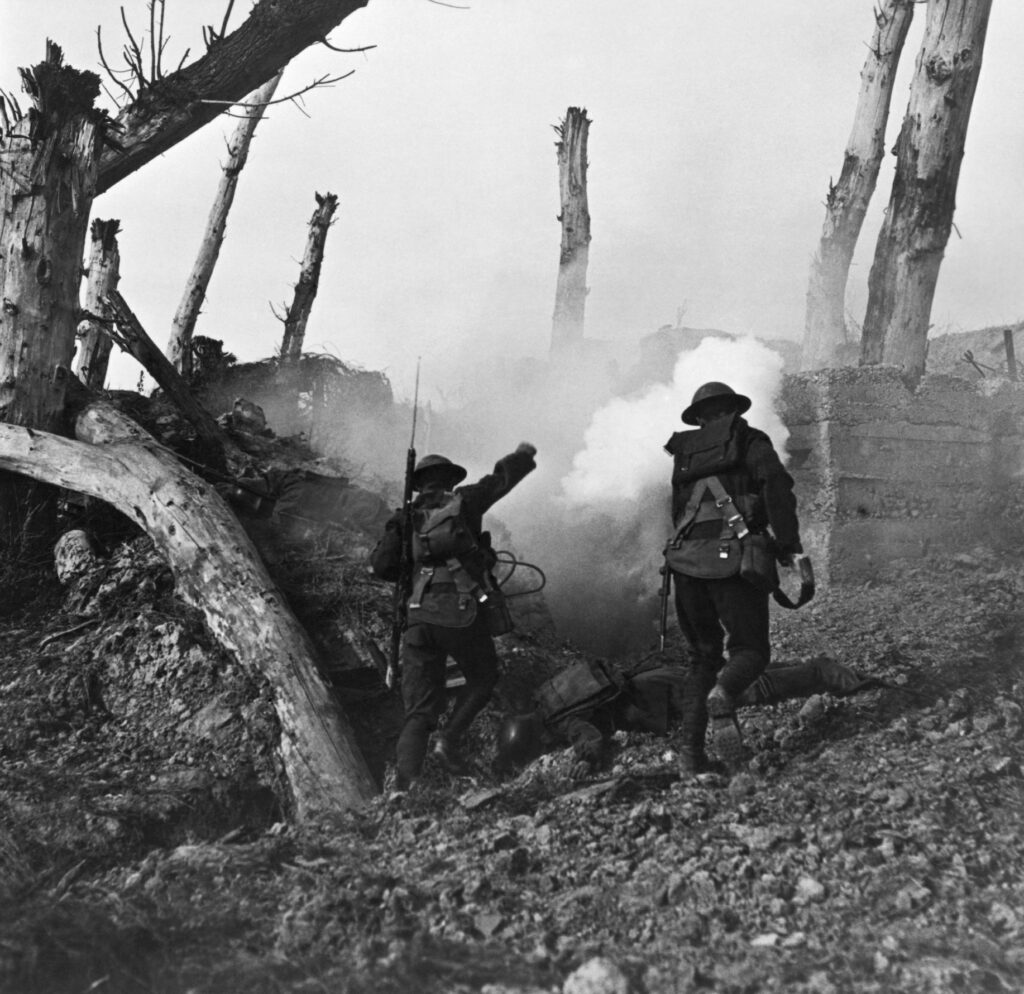
US troops in action
By mid-October, it was now clear to the German military command that if peace was not sought, the German army would face a total collapse.
The German military would push the civilian government into negotiations before this collapse could take place.
Years later, people like Erich Ludendorff, who knew the truth of the German army’s near collapse and who had pushed for peace talks, would propagate the “stabbed-in-the-back myth” which suggested that Germany had been close to winning the war but had been betrayed by a mix of communists and Jews in Germany who had collapsed the government and caused their defeat.
Ludendorff would be an early supporter of Hitler, and the Nazi Party, and took part in Hitler’s first attempt to overthrow the German Republic in the Beer Hall Putsch in November 1923.
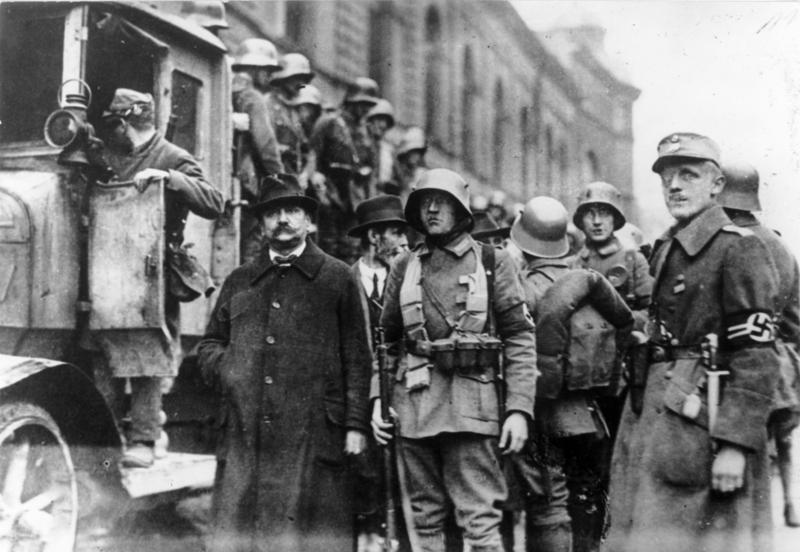
Early Nazis, in the attempt to seize power during the 1923 Putsch [Bundesarchiv, https://commons.wikimedia.org/w/index.php?curid=5420055]
If you like what you have just read, support the Daily Friend

